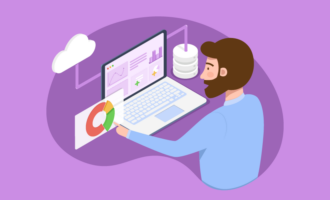If you’re looking for a plan for business as usual, you’ll find plenty. What COVID-19 has taught companies of all sizes is the need for smart, strategic plans for business during unusual times.
While sheltering in place is currently viewed as a temporary disruption, it may become the new norm. How long that disruption will continue is unknown. What you do know is that your existing business plan may not be valid during this time.
Here are some things to consider as you create an adaptive continuity plan:
How have your financial projections and cash flow changed?
Any crisis can impact a company’s cash flow and financial projections. To figure out how to address your financial position during the crisis, you’ll need to quantify this impact to the best of your ability.
Use the previous year’s financials as a measuring stick against your current cash flow figures to determine how much it has dropped. Compare daily orders or monthly accounts that are still active to those that have paused or canceled their orders.
Your financial projections may rely largely on your customers’ ability to continue drawing an income, whether they are still employed or have received some type of assistance.
Once you have a general idea of what you’re facing, you can start defining objectives and strategies for continuity planning.
What are your main business objectives during this crisis?
Think about what your business needs to do in the coming months to keep its doors open, and then craft those goals into short-term business objectives. Base your decisions on what you know about the crisis, your company’s market and customer base, and its organizational structure and processes.
Your short-term main objectives may include any of the following:
- Develop an alternative revenue stream or business model.
- Maintain payroll and minimize staff reductions.
- Reduce business expenses by X percent.
- Apply for X amount of funding to sustain the business for X number of months.
What strategies might help you achieve those objectives?
The next step for your continuity business plan is to determine which strategies can help you achieve your objectives. You may need creativity, extensive research, and energy. These efforts could sustain your business, keep your team employed, and help stimulate the economy.
Let’s use the examples from above to illustrate some potential strategies for achieving these short-term objectives. If the objective is to develop an alternative revenue stream or business model, you should first research what consumers or businesses are still buying.
For example, essential goods and services like groceries and home repair continue to surge while businesses turn to remote work. Alternatively, perhaps you can adapt your current business model to create physical or virtual delivery systems.
Many short-term objectives are interconnected. For example, in order to maintain payroll and minimize staff reductions, you need to find the funds to do so. Those funds may come in whole or in part from new revenue streams or a redirected business model.
However, you’ll likely need to lower business expenses as well. Strategies may include closing physical offices, which could reduce overhead costs like utilities and rent. In addition, you could temporarily suspend things like food delivery, gym memberships, and other perks for employees to reduce expenses.
Finally, you may identify a financial gap that you can’t cover. In that case, applying for funding to sustain the business through the crisis should be one of your primary objectives. Strategies include researching available federal, state, city, and private funding assistance. It’s important to act quickly due to the limited availability of grants and loans.
What are your long-term strategies in case this goes on longer than expected?
Since there is so much uncertainty around the current and future impact of COVID-19 on how we work and live — not to mention the impact it will continue to have on the economy — you need to include long-term strategies.
These should establish plans to deliver sustainable revenue, maintain payroll, and keep your business afloat. This may mean operating without a physical location or entering a completely new product or service segment to reduce costs and eliminate the need for further funding.
What can you do differently when this passes to better prepare for similar disruptions?
The lessons from COVID-19 may show you that your company doesn’t need to rely on a traditional business model. Many will see the value of undertaking a digital transformation and being more prepared to work remotely.
Incorporate these lessons into your existing business plan so that you don’t have to create and implement a new continuity plan if another disruption occurs.




























Send Comment: